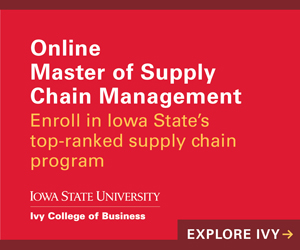Radio waves on ID tags track products, people

Imagine never having to wait in a store checkout line again. Retailers are exploring the idea of using a technology that relies on radio waves to charge customers for products as they leave the store.
The technology, called radio frequency identification, is already present in many people’s daily lives, such as the access cards we use to gain entry into the workplace. It has a broad scope of potential uses, ranging from tracking evidence in a crime laboratory to tracing a steak back to the cow it was butchered from.
“RFID technology is essentially a way to identify if something is there,” said Tony Townsend, an associate professor of management information systems at Iowa State University. “My experience where RFID technology is particularly useful is in replacing bar codes.”
Bar codes and RFID tags both carry information about a product. But RFID tags, which have antennas, can be read from a greater distance than bar codes, which have to be in the direct line of sight of a scanner to be recognized.
An RFID tag contains data about the item to which it is attached, such as where it was produced and when it was shipped. A hand-held reader or a fixed device such as a warehouse portal reads the information on the tag as the item passes by. Some tags, called active tags, have a battery pack attached. These tags often carry more detailed information about a product and have a signal with a range of up to 300 feet, compared with about 20 feet for the less expensive passive tags.
Although RFID technology has been around for several decades, it has become more widely used in recent years since Wal-Mart Stores Inc. and the U.S. government started requiring their suppliers to use RFID tags. On Jan. 1 of this year, a new law went into effect requiring all new contracts to mandate RFID tagging on products sold to the government. Sharmon Norris, a procurement specialist for Iowa State University’s Center for Industrial Research and Service, said the military factors into the government’s desire to use RFID tags.
“Soldiers in the desert have been having trouble locating products in the drop zones,” Norris said. “From the pictures I’ve seen of these drop zones, there are 45 to 100 pallets that all look alike. The soldier might be told that somewhere out there is the new front right tire for their truck, but they have no idea which case it’s in. With a RFID tag on the case, the package will send a signal to the soldier’s hand-held reader saying ‘I’m here.’”
Norris said RFID tags save these soldiers a substantial amount of time because they no longer have to walk up to each pallet and look for identification. Now, when products leave a government supply station, a message is sent automatically to the troops saying the product was shipped and its expected arrival time. When the package lands in the drop zone, it emits a frequency to the hand-held reader to verify its arrival.
Suppliers like the system, Norris said, because they get paid more quickly. RFID feeds directly into the government’s electronic accounting system, so payment is immediately ordered for the manufacturer once products arrive.
As suppliers adapt to using the RFID tags, some are making a greater investment in the technology in an effort to improve internal efficiencies. This is an area in which Townsend and Brian Mennecke, also an associate professor of management information systems at ISU, spend a significant amount of their time. They are in the process of setting up an RFID laboratory at the university to explore how businesses can use it to better manage their inventories.
Mennecke and Townsend are still working to secure a location for the RFID lab, but they have already purchased several pieces of equipment that they’re using for classroom demonstrations and research. Catepillar Corp. provided the initial funding to get the lab started, and more money is being sought now for its expansion.
“Firms agree that students should have exposure to RFID technology so they’re familiar with it and can think of ways to adapt it for different situations,” Mennecke said.
RFID equipment can be fairly expensive, with hand-held readers in the range of $500 to $1,000 and larger antennas or receiver portals costing around several thousand dollars, Mennecke said. The product tags cost anywhere from about 10 cents to $100, depending on how sophisticated they are and if they’re rewriteable.
Eric Smith, vice president of management information systems for Hy-Vee Inc., said the cost of the equipment, along with some of its current limitations, has prevented the West Des Moines-based supermarket chain from widely embracing RFID technology. Just last month, his office started testing the technology by putting the tags on printer cartridges to see if it could help improve supply management of these items.
“The big-picture goal with this experiment is to choose a small-scale test that is applicable on a large-scale level,” Smith said.
“Within our industry, RFID technology is being tested by many companies right now,” Smith said. “Everyone seems to be finding challenges that can make it hard to justify the cost of the technology.”
Smith said there are several known physical restrictions to RFID related to the signal’s reach. The radio waves don’t travel though water, metal or biomass. For example, if someone has cupped a tagged item in their hand, or their arm is covering the tag on a large package, signal won’t be picked up by the receiver.
According to recent article in Supermarket News magazine, one grocery chain, Maine-based Hannaford Bros. Co., recently reported an 85 percent success rate with use of RFID tags in its warehouse, which it felt was unsatisfactory.
“Everyone is looking for a return on investment,” Smith said. “Retailers would not want an 85 percent read rate at the point of sale. The technology would have to be developed to be 99.9 percent accurate to really be useful.”
Although RFID needs to be further developed to be useful in some applications, Smith said it has already been shown to be effective in other areas. One place where the tags have a proven return on investment is in managing a company’s delivery fleet. Using the higher-end RFID tags, semi trailer rigs passing through a truckyard gate can send a signal to a computer that indicates whether they are carrying products that need to be received by inventory, or whether the refrigeration unit is still turned on.
“We aren’t doing this right now, but it would probably be the first type of technology we would employ,” Smith said.
Townsend and Mennecke expect to see many new uses for RFID technology in the near future. They’re currently working on a research project with a crime lab in Massachusetts on how to use RFID tags to improve evidence tracking. They’ve also been closely following the meatpacking industry’s interest in using the technology to keep track of the identity of an animal through the time the meat is packaged.
Another possible use for RFID tags would be to install them on people to track where they have been during the day via a global positioning system. This technology could be useful by law enforcement personnel to ensure that convicted sex offenders are not going near schools, or by schools to make sure students were in school when they were supposed to be.
It’s because of these last examples of RFID technology’s use on people that not everybody is convinced that this high-tech tracking is a good thing.
“Clearly, there is a strong movement among consumers about the increasing aggregation of information,” Townsend said. “That is a legitimate issue, but to think that somehow RFID is the bad guy in completing the takeover of the planet is not true.”







